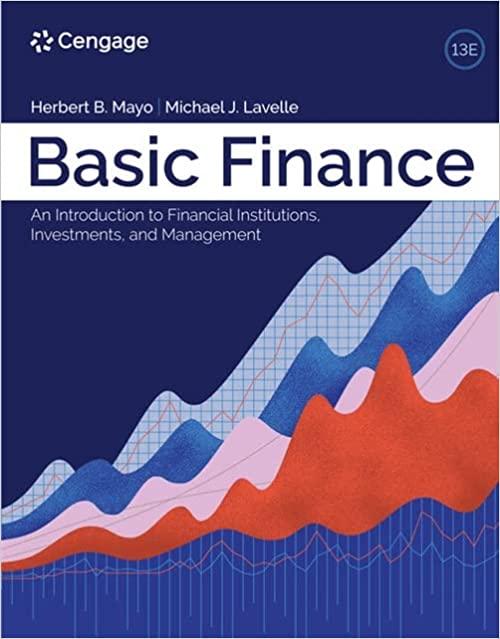Question
My answers were all wrong, I answered , 23 Answers (a), (b), and (c), 24 The most recent dividend, the expected dividend growth rate, the
My answers were all wrong, I answered , 23 Answers (a), (b), and (c), 24 The most recent dividend, the expected dividend growth rate, the required rate of return on the stock, and the expected capital gains yield, 28 Charitable donations, 29 Debt financing allows more of a business's operating income to flow through to investors. 30 The trade-off theory tells us that businesses should use almost 100 percent debt financing,
Question 23. Question : Investor-owned (for-profit) firms receive the proceeds from stock sales in which of the following markets? Student Answer: IPO market Secondary market Answers (a) and (b) Answers (a), (b), and (c) Primary market
Question 24. Question : Under the constant growth model of stock valuation, the expected value of a stock (i.e., the expected price at the end of the year) is a function of which of the following? Student Answer: The most recent dividend, the expected dividend growth rate, and the required rate of return on the stock The expected dividend growth rate, the required rate of return on the stock, and the expected capital gains yield The most recent dividend, the expected dividend growth rate, the required rate of return on the stock, and the expected capital gains yield None of the above The most recent dividend, the expected dividend growth rate, and the expected capital gains yield
Question 28. Question : Which of the following is not a source of equity capital in not-for-profit corporations? Student Answer: Start-up capital from religious, educational, or governmental entities Bond issues Charitable donations Retained earnings Government grants
Question 29. Question : Which of the following statements about the use of debt financing (financial leverage) is incorrect? Student Answer: Because debt financing "levers up" (increases) owners' returns, its use is called "financial leverage." Debt financing allows more of a business's operating income to flow through to investors. In most situations, the use of debt financing increases the return to owners (say, as measured by ROE). Capital structure theory enables managers to precisely determine the optimal capital structure for any for-profit business. In all situations, the use of debt financing increases the riskiness to owners.
Question 30. Question : Which of the following statements about the trade-off theory of capital structure is most correct? Student Answer: The trade-off theory tells us that businesses should use some debt financing but not too much. The trade-off theory can be used to set a precise optimal structure for any given business. The trade-off theory tells us that businesses should use almost 100 percent debt financing. The trade-off theory tells us that businesses should use almost no debt financing. The trade-off theory has no applicability to not-for-profit businesses
Step by Step Solution
There are 3 Steps involved in it
Step: 1

Get Instant Access to Expert-Tailored Solutions
See step-by-step solutions with expert insights and AI powered tools for academic success
Step: 2

Step: 3

Ace Your Homework with AI
Get the answers you need in no time with our AI-driven, step-by-step assistance
Get Started


